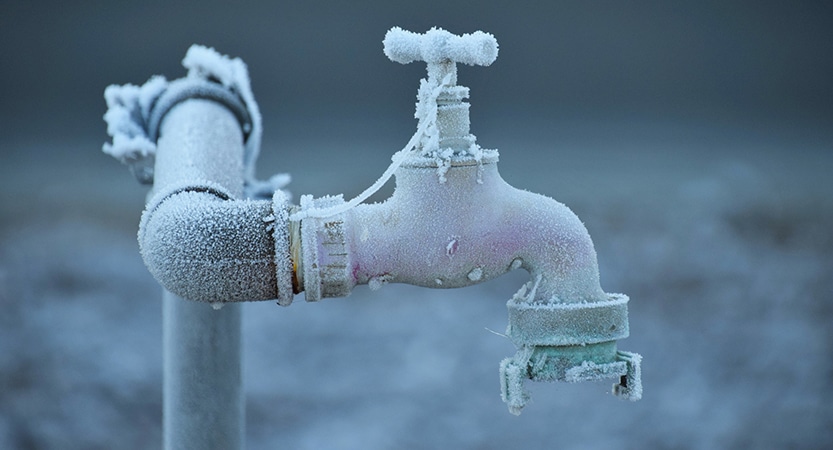Tips for Preventing Frozen Plumbing in Cold Weather: Specialist Tips
Tips for Preventing Frozen Plumbing in Cold Weather: Specialist Tips
Blog Article
This post down below involving How To Avoid Freezing Pipes is without a doubt interesting. Don't skip it.

Cold weather can damage your plumbing, particularly by freezing pipelines. Below's how to prevent it from occurring and what to do if it does.
Introduction
As temperatures decline, the danger of icy pipes rises, possibly bring about expensive repair services and water damage. Comprehending just how to prevent icy pipes is vital for homeowners in chilly climates.
Avoidance Tips
Protecting prone pipelines
Wrap pipes in insulation sleeves or make use of warmth tape to protect them from freezing temperatures. Focus on pipes in unheated or external areas of the home.
Heating methods
Maintain indoor rooms effectively heated, particularly areas with pipes. Open closet doors to enable warm air to distribute around pipelines under sinks.
How to recognize frozen pipelines
Seek lowered water flow from faucets, uncommon odors or noises from pipelines, and noticeable frost on subjected pipelines.
Long-Term Solutions
Architectural modifications
Consider rerouting pipes far from outside walls or unheated areas. Include additional insulation to attic rooms, cellars, and crawl spaces.
Updating insulation
Buy high-quality insulation for pipelines, attic rooms, and wall surfaces. Proper insulation assists maintain regular temperatures and decreases the threat of icy pipes.
Shielding Outside Plumbing
Garden pipes and exterior taps
Detach and drain yard tubes before wintertime. Mount frost-proof spigots or cover outside taps with protected caps.
Comprehending Icy Pipelines
What creates pipes to ice up?
Pipelines freeze when exposed to temperature levels listed below 32 ° F (0 ° C) for expanded periods. As water inside the pipes freezes, it increases, taxing the pipe wall surfaces and potentially causing them to rupture.
Dangers and problems
Frozen pipes can result in supply of water interruptions, residential property damages, and pricey repair work. Burst pipes can flooding homes and cause considerable architectural damage.
Indications of Frozen Piping
Identifying frozen pipelines early can prevent them from rupturing.
What to Do If Your Pipelines Freeze
Immediate activities to take
If you think frozen pipes, keep taps open up to soothe stress as the ice thaws. Use a hairdryer or towels soaked in warm water to thaw pipelines slowly.
Conclusion
Avoiding icy pipes requires aggressive measures and fast reactions. By comprehending the reasons, indicators, and preventive measures, homeowners can safeguard their pipes during cold weather.
5 Ways to Prevent Frozen Pipes
Drain Outdoor Faucets and Disconnect Hoses
First, close the shut-off valve that controls the flow of water in the pipe to your outdoor faucet. Then, head outside to disconnect and drain your hose and open the outdoor faucet to allow the water to completely drain out of the line. Turn off the faucet when done. Finally, head back to the shut-off valve and drain the remaining water inside the pipe into a bucket or container. Additionally, if you have a home irrigation system, you should consider hiring an expert to clear the system of water each year.
Insulate Pipes
One of the best and most cost-effective methods for preventing frozen water pipes is to wrap your pipes with insulation. This is especially important for areas in your home that aren’t exposed to heat, such as an attic. We suggest using foam sleeves, which can typically be found at your local hardware store.
Keep Heat Running at 65
Your pipes are located inside your walls, and the temperature there is much colder than the rest of the house. To prevent your pipes from freezing, The Insurance Information Institute suggests that you keep your home heated to at least 65 degrees, even when traveling. You may want to invest in smart devices that can keep an eye on the temperature in your home while you’re away.
Leave Water Dripping
Moving water — even a small trickle — can prevent ice from forming inside your pipes. When freezing temps are imminent, start a drip of water from all faucets that serve exposed pipes. Leaving a few faucets running will also help relieve pressure inside the pipes and help prevent a rupture if the water inside freezes.
Open Cupboard Doors
Warm your kitchen and bathroom pipes by opening cupboards and vanities. You should also leave your interior doors ajar to help warm air circulate evenly throughout your home.

I recently found that blog posting on 6 Ways to Prevent Frozen Pipes while doing research the internet. Enjoyed reading our blog posting? Please quickly share it. Let other people discover it. Thank-you for your time invested reading it.
Call Today Report this page